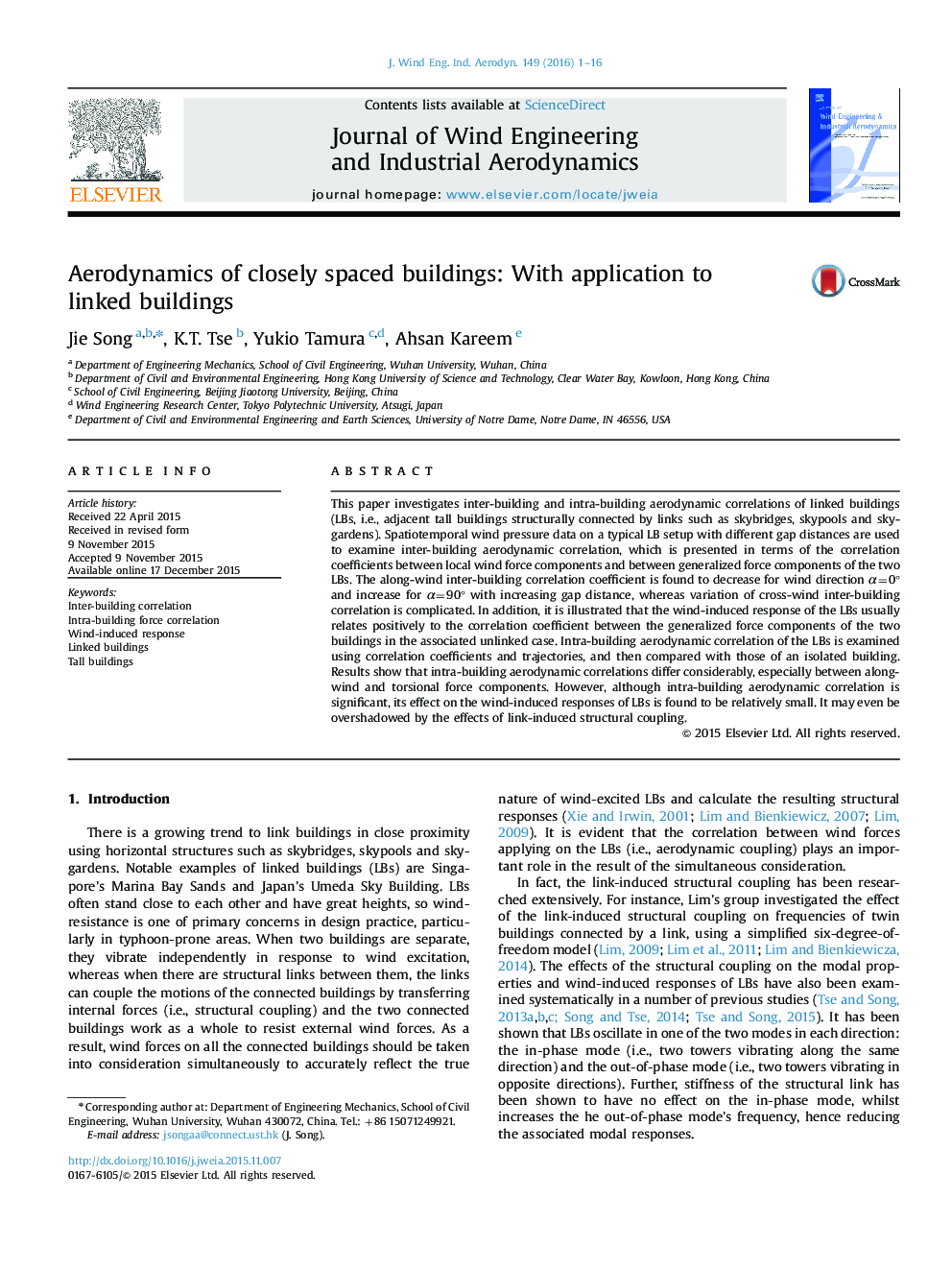| Article ID | Journal | Published Year | Pages | File Type |
|---|---|---|---|---|
| 292899 | Journal of Wind Engineering and Industrial Aerodynamics | 2016 | 16 Pages |
•Inter- and intra-building aerodynamic correlations of LBs are investigated.•Spatiotemporal wind pressure data on LBs are used to examine the correlations.•Inter-building correlation is investigated systematically for two critical wind directions.•Wind-induced response of an LB is related positively to the inter-building correlation.•Intra-building correlations differ significantly from that for the isolated building.
This paper investigates inter-building and intra-building aerodynamic correlations of linked buildings (LBs, i.e., adjacent tall buildings structurally connected by links such as skybridges, skypools and skygardens). Spatiotemporal wind pressure data on a typical LB setup with different gap distances are used to examine inter-building aerodynamic correlation, which is presented in terms of the correlation coefficients between local wind force components and between generalized force components of the two LBs. The along-wind inter-building correlation coefficient is found to decrease for wind direction α=0° and increase for α=90° with increasing gap distance, whereas variation of cross-wind inter-building correlation is complicated. In addition, it is illustrated that the wind-induced response of the LBs usually relates positively to the correlation coefficient between the generalized force components of the two buildings in the associated unlinked case. Intra-building aerodynamic correlation of the LBs is examined using correlation coefficients and trajectories, and then compared with those of an isolated building. Results show that intra-building aerodynamic correlations differ considerably, especially between along-wind and torsional force components. However, although intra-building aerodynamic correlation is significant, its effect on the wind-induced responses of LBs is found to be relatively small. It may even be overshadowed by the effects of link-induced structural coupling.
